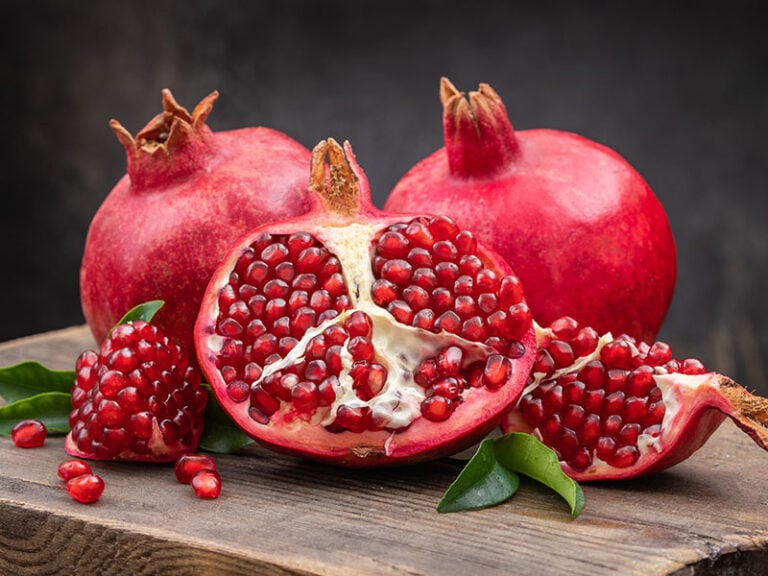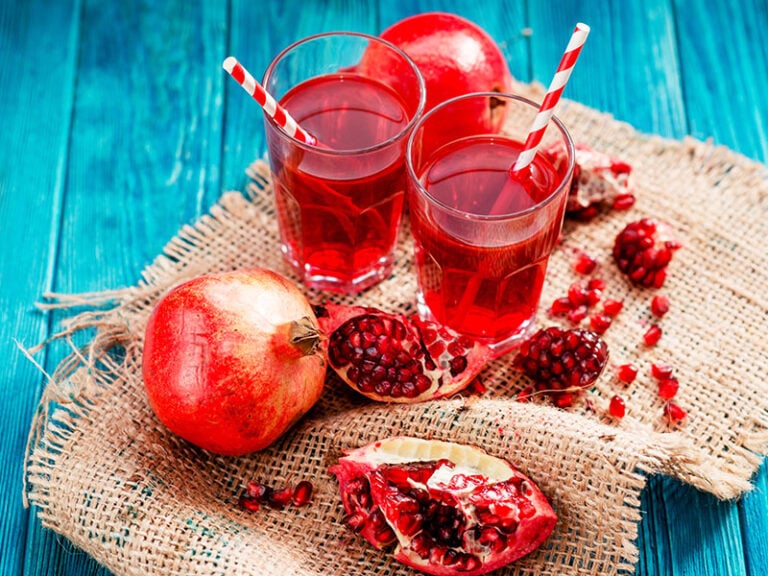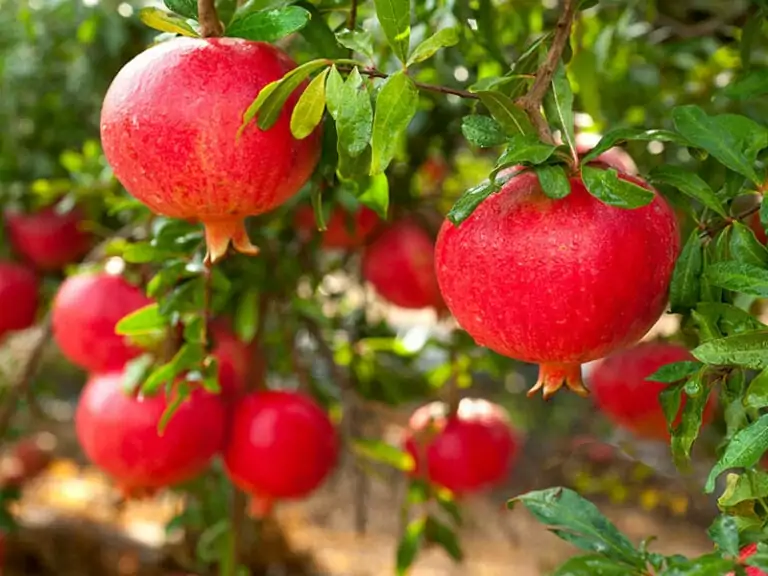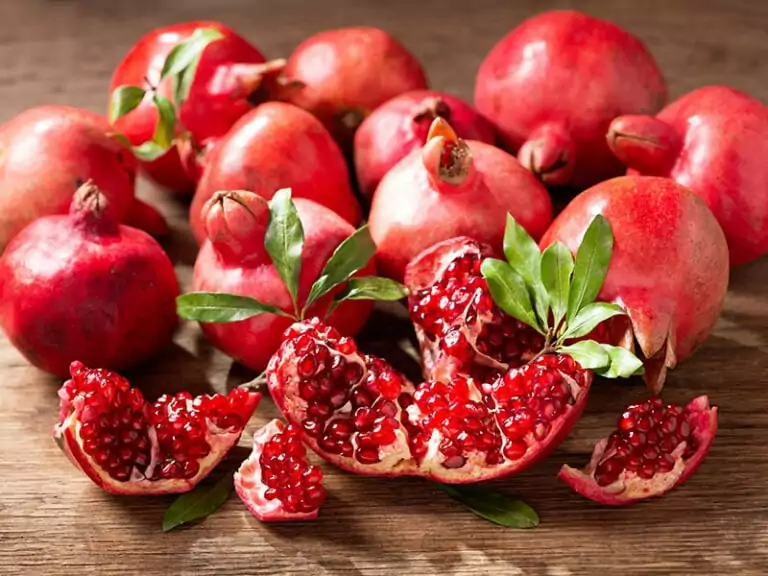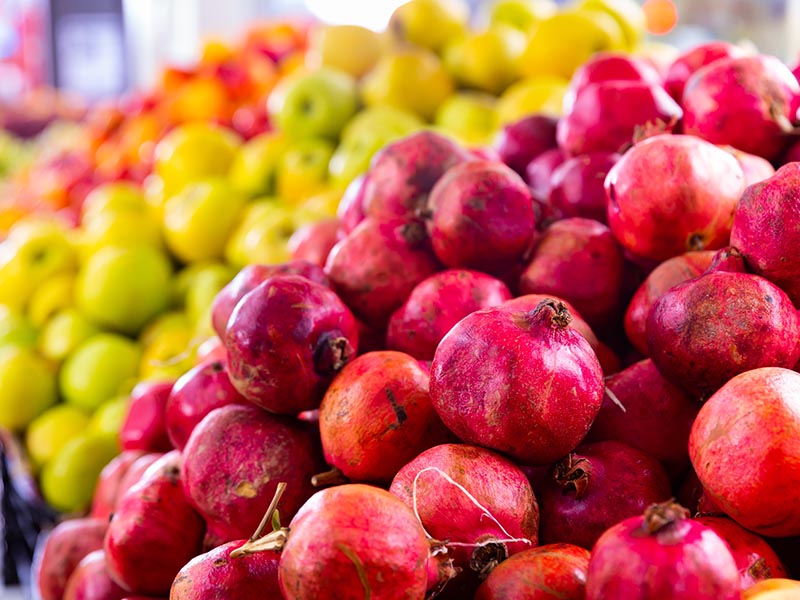
You may not understand “why are pomegranates so expensive?” and may wonder why you have to pay so much for such a small fruit. Don’t worry. I got all the explanations for you in this post.
During this journey, you will discover the reasons behind the pomegranate’s high price, tips to get the best price tag, and more recipes to share with your family. Enough talking! It’s time to get the “juicy” details.
Pomegranate – A Gift From The Nature
It’s no exaggeration to say that the pomegranate is a wonderful creation of nature for humans. Throughout history, the fruit has been attributed to many aspects of health. But what else do you know? Are you ready to gain more knowledge with me?
Pomegranate Overview
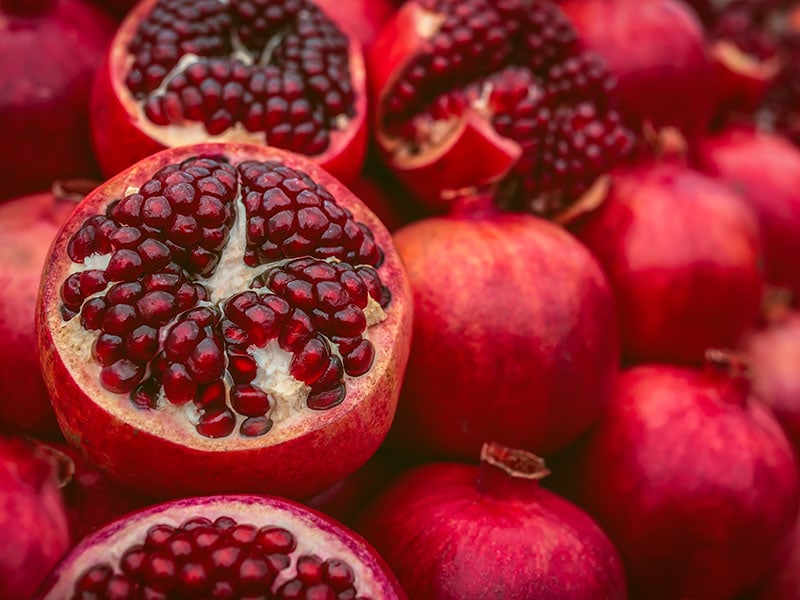
Pomegranates (Punica granatum) are endemic to Iran and nearby locales. Its cultivation happened thousands of years ago. Today, you can find the fruit throughout Asia, Africa, Europe, and, particularly, the Americas.
In the 16th century, the red rubies entered the Americas when Spanish settlers brought the plant to California. Currently, pomegranates grow successfully in the arid regions of California and Arizona.
The pomegranate is a seasonal plant that bears fruits in the fall and winter. The harvest season will be from September to January, depending on the varieties such as Wonderful, Eversweer, or Parfianka. A pomegranate can stay edible for a long time at room temperature.
With abundant nutritional content, pomegranates carry many benefits to human health. In ancient cultures, people used the superfruit to cure many ailments, such as reducing fever and treating intestinal worms.
How To Pick A Good Pomegranate
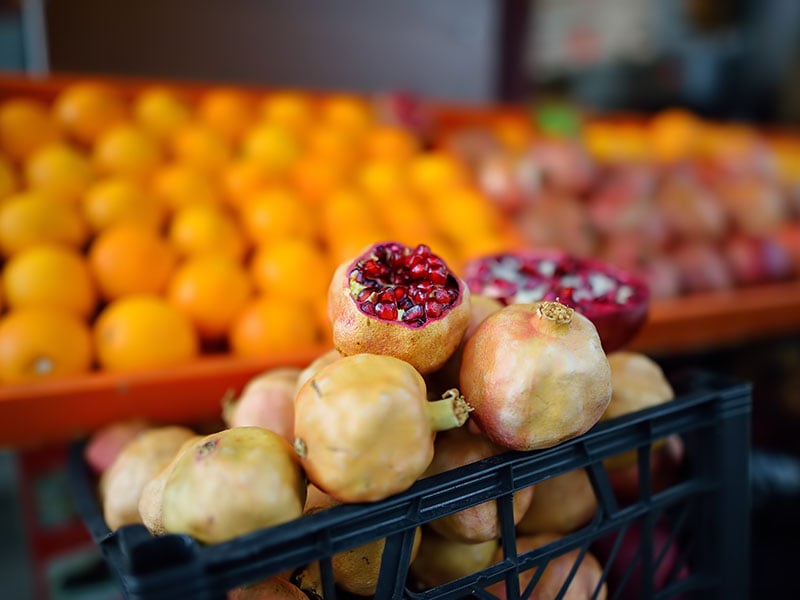
It is not easy to assess the ripeness of pomegranates: even experienced gardeners can make a wrong guess. However, that isn’t an impossible task. Below are some pocket tips for you on how to know when pomegranates are ripe enough for eating.
If you purchase pomegranates at stores, you can rest assured about its ripeness because most of the time, fruit sellers only display fully mature fruits on the shelves. However, you can still determine the ripeness by color and weight.
You should purchase pomegranates that are uniform in color and show no signs of bruising or damage. At the same time, choose the large and heavy fruits with smooth yet leathery skin because they are certain to be ripe and bursting with juice inside.
Where to Buy
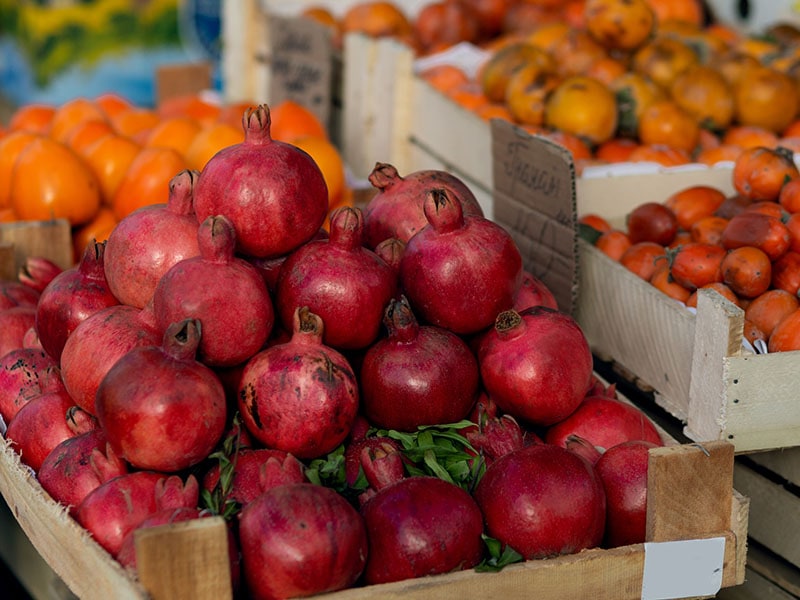
Oftentimes, pomegranates are sold in the fresh form, not canned or frozen. You can find this fruit at stores, supermarkets, or local farmer’s markets. There are various kinds of pomegranate, each with slightly different taste and appearance.
Pomegranates are often purchased in the whole fruit form, not by the seeds inside. Pink juice is also a popular pomegranate extract available in any store.
Remember these tips for the next grocery shopping and select the best pomegranates.
Reasons To Push Up Prices Of Pomegranate
As you know, the cost of a product depends on many factors. Speaking of the price, pomegranates are quite costly compared to others. Do you want to know the reasons behind it?
Specific Places of Planting
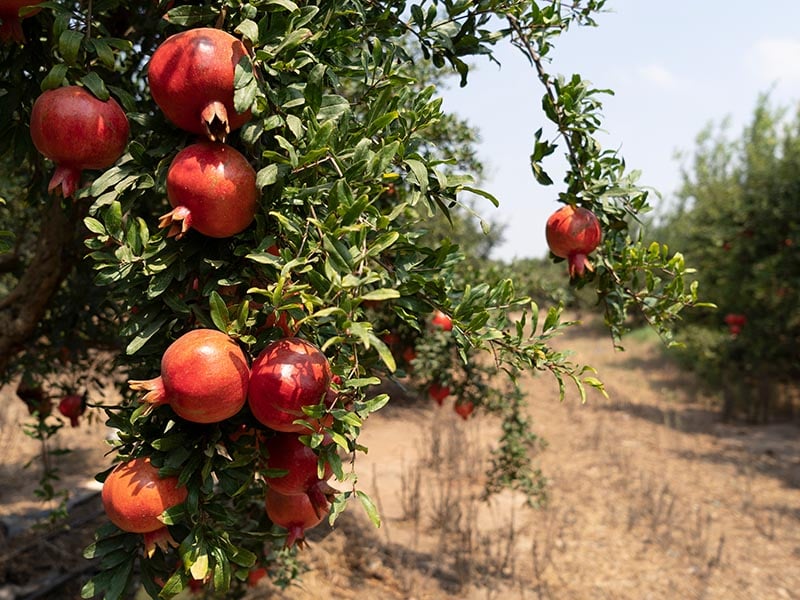
In general, pomegranates are easy to grow and require you a little effort to take care of. However, the most important thing about this plan is the climatic conditions.
Pomegranates prefer direct sunlight daily to thrive, so they often need to be in an area with full sun. Except for improved cultivars like Russian pomegranates, most varieties tend to grow and thrive in warm climates with temperatures above 85°F.
This specimen can tolerate low temperatures but only for short periods. Therefore, pomegranate cultivation only happens in some places where conditions are compatible.
More specifically, the trees are widely grown in temperate and tropical climates such as the Middle East, India, or Southeast Asian countries. Meanwhile, the bloody-red fruits do best in USDA Zones 8 to 10 in the US (roughly the deep southern half of the country). (1)
Slow Fruit Production
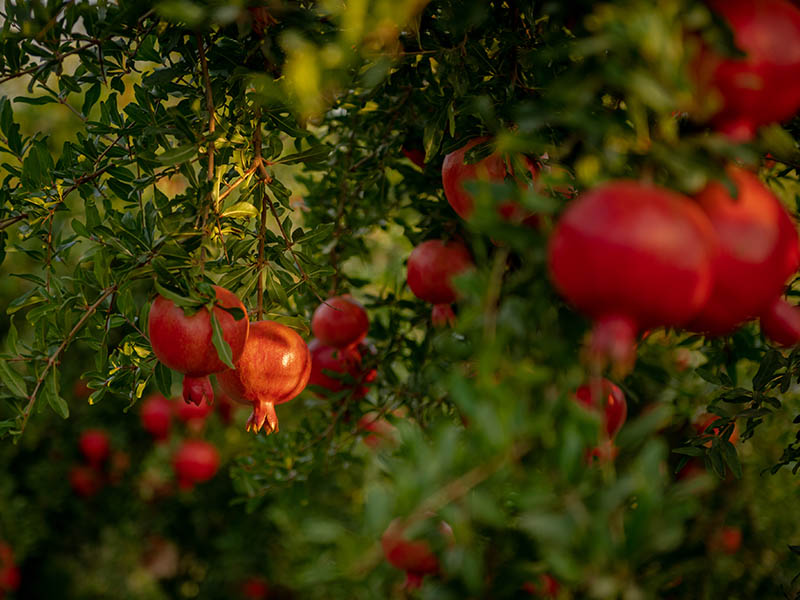
Sadly enough, you can’t see the ripe pomegranate tangle on the branches in the first season. It generally takes three to five years for the real crops to begin.
On average, pomegranates can only produce fruits for the first 12 to 15 years of their lifespan, so the time waiting for the cultivation may take up almost ⅓ of the tree’s lifespan. And yet, the plant needs 6 to 7 months to bear fruits after flowering.
Just so you know, pomegranates do not produce mass like oranges or apples. More clearly, a pomegranate tree produces about 20 to 25 fruits at a young age. If you are lucky, the production can reach 200 to 250 per tree by year 10. But it’s also a long way to go.
In all fairness, the more fruits the tree produces, the less tasty the flavor is. Consequently, gardeners prune trees every year to limit the branches outstretching. As you can see, the annual production of pomegranate is quite modest, leading to the relatively high cost.
Transport
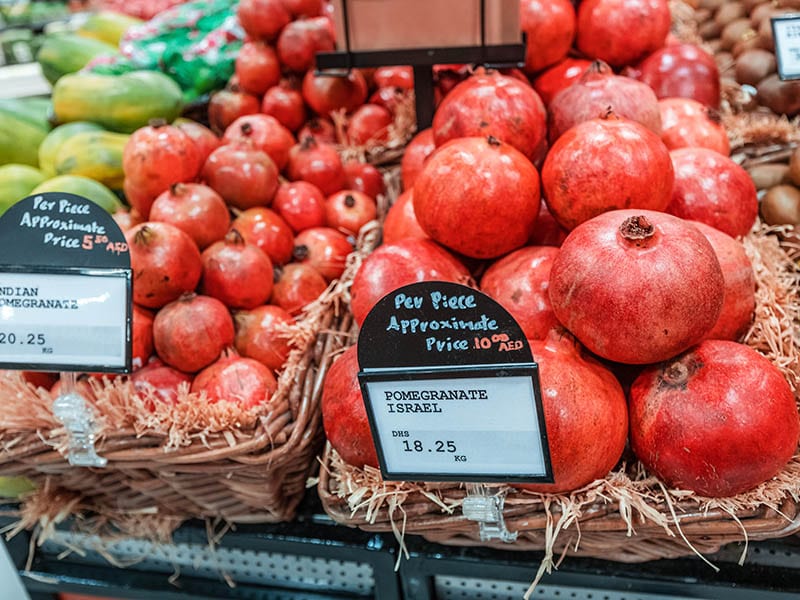
Labor costs, packaging, and shipping costs are all the things you need to consider regarding pomegranate prices.
There is a wide range of pomegranate varieties in the US, such as the Wonderful pomegranate which accounts for the largest share. Even so, the pomegranate supply in America is not enough to meet the demand.
Consequently, if you want to taste diverse varieties, you have to look for the imported products. Although transportation is less unlikely to damage pomegranates than with other fruits due to their thick skin, it considerably adds to your bills.
Importing pomegranates from other countries, whether a whole fruit or juice, you must account for taxes, packaging, shipping charges, and all other markups.
New Face On The Market
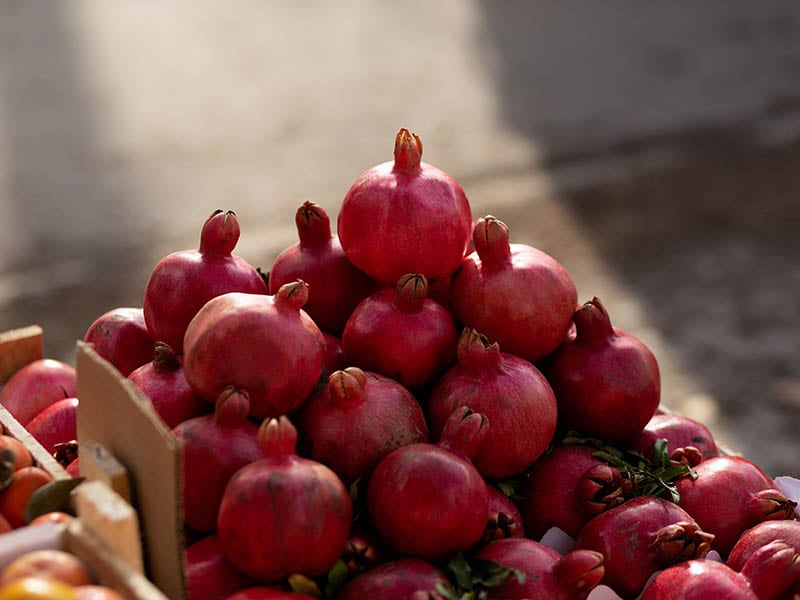
For Americans, pomegranate is still not a familiar face on the shelf, which is also one of the reasons behind the high price. Unlike other familiar fruits, Americans only started their interest in pomegranates in the early 21st century, leading to the demand far exceeding the supply.
Nowadays, California and Arizona are the two main domestic growing regions due to the dry climate suitable for growth. Although the cultivation happens in other places such as Utah, Florida, or Texas, the production still fails to meet the demand of the whole country. (2)
Weather
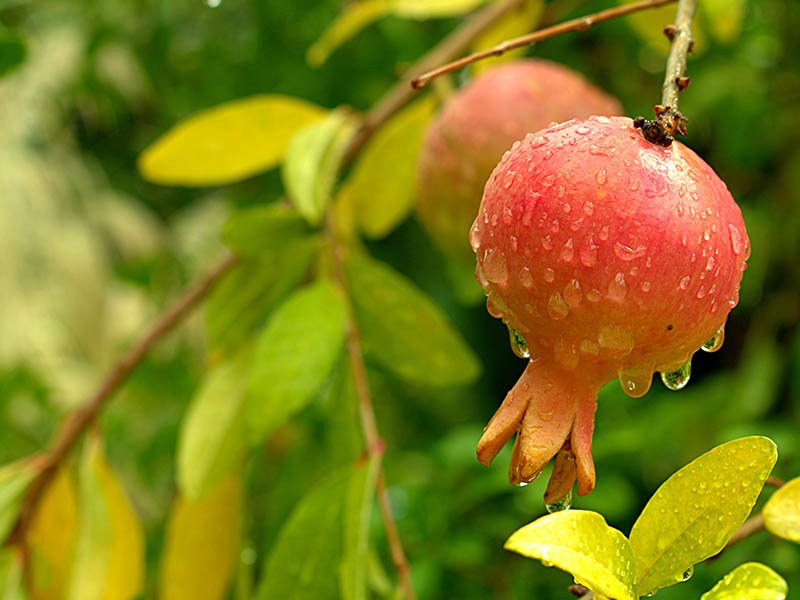
Weather is also one of the factors that lead to the drop in pomegranate production and drives up prices. Even though the trees are grown in an ideal climate, they cannot avoid the natural element.
The superfruits stop ripening once it leaves the branch, so you must wait until the right time to harvest them. The crop is usually in the fall, from August to October. At this time, early surge rains or sudden storms can cause a significant reduction in yield.
Good Marketing
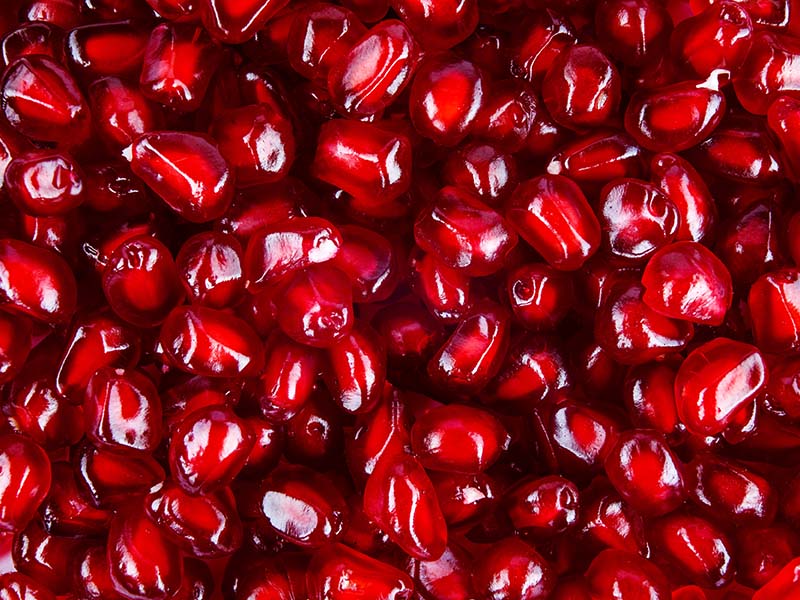
Thanks to a series of articles about their miraculous uses, the red rubies have surged in popularity and gained favor with health-conscious people.
Referring to pomegranate, people will remember a superfruit containing a package of minerals, vitamins, and fibers. Nutrient-rich fruits indeed tend to be more expensive. This fruit will be a treasurous weapon in the fight against inflammation and various diseases.
In comparison with apples or oranges, the price of pomegranates, whether fruit or juice, is often higher. People look to the fruit as a panacea for health, so manufacturers will take advantage of this opportunity to push the price up.
Have you ever wondered how the pomegranates processing line works? Find out here!
Bypass The High Price With These Tips
For pomegranate lovers, I know the market price is your desired number. However, you can make the most use of these tips to get a better price tag.
Choose The Right Time
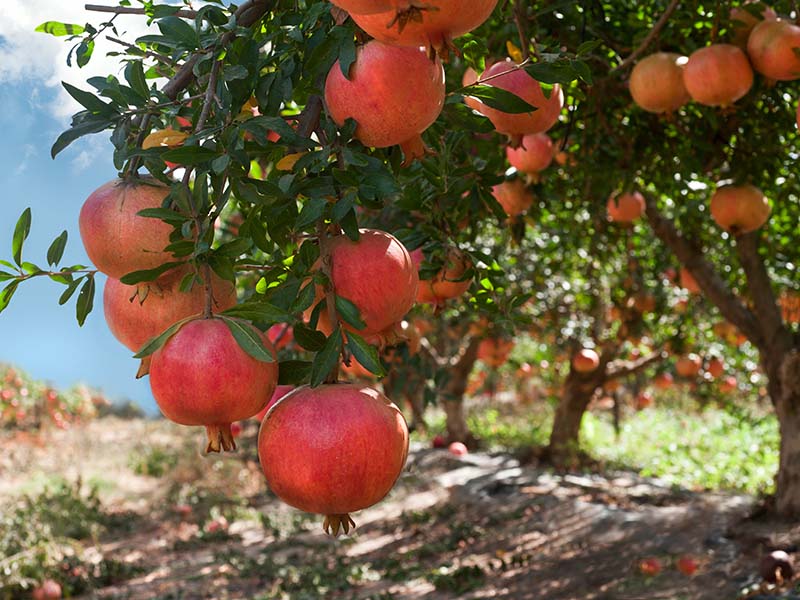
Purchasing fruits in season is always more affordable than usual. Fortunately, the blood-red fruits have been available in stores all year round due to their increased popularity.
However, bear in mind that the pomegranate is still a seasonal plant, so you should make the most of the harvest season to get a better price.
The biggest crop will be between September and November in California and Arizona, the two largest local production regions. Be sure to mark on your calendar if you live in the US. For people living in the UK, be ready for the harvest in autumn.
Buy in Bulk
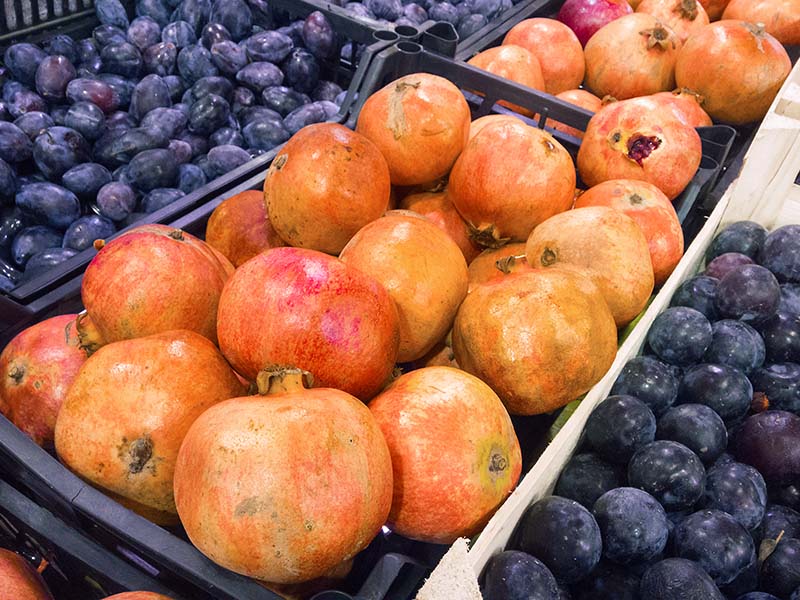
In addition to buying fruit in season, you can save a lot of money if you buy them in bulk. This approach both saves money and reduces waste.
It’s worth remembering that the pomegranate can last long in the refrigerator. Aside from raw consumption, the sweet jewels can be added to salads or yogurt and made into juice or smoothies. You can do many things with pomegranates, so don’t mind the bigger payment.
Grow Your Pomegranates
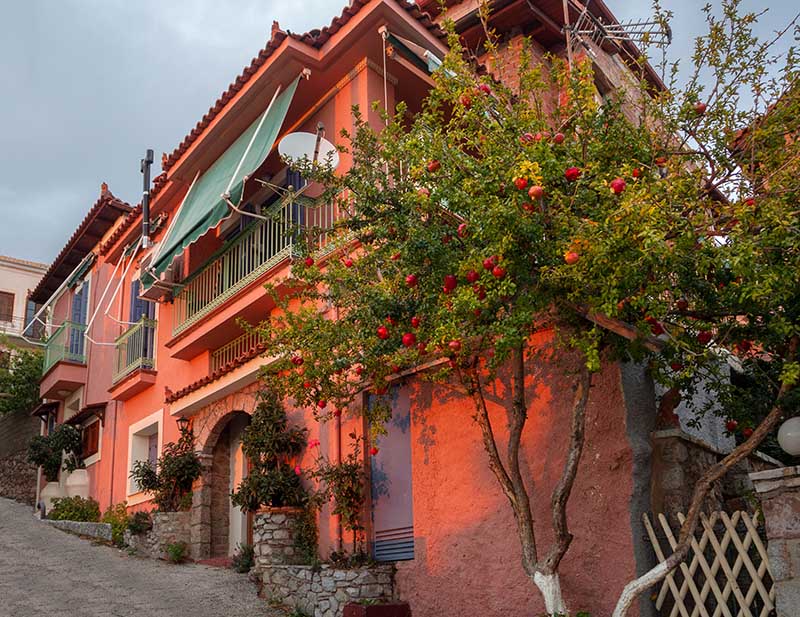
How about growing a pomegranate on your own? Picking the fruit fresh off the tree won’t cost you a dime. I know it takes quite a while to see the results. Yet, in the long run, your tree not only produces fruits but also adds beauty to your garden.
By and large, the bloody-red fruits are a low-maintenance plant. If you are not a commercial producer, your trees don’t need much water or pruning. All you need to do is plant pomegranates in a place with full sunlight and provide sufficient nutrients.
Plant Your Pomegranate – Step-By-Step Instruction
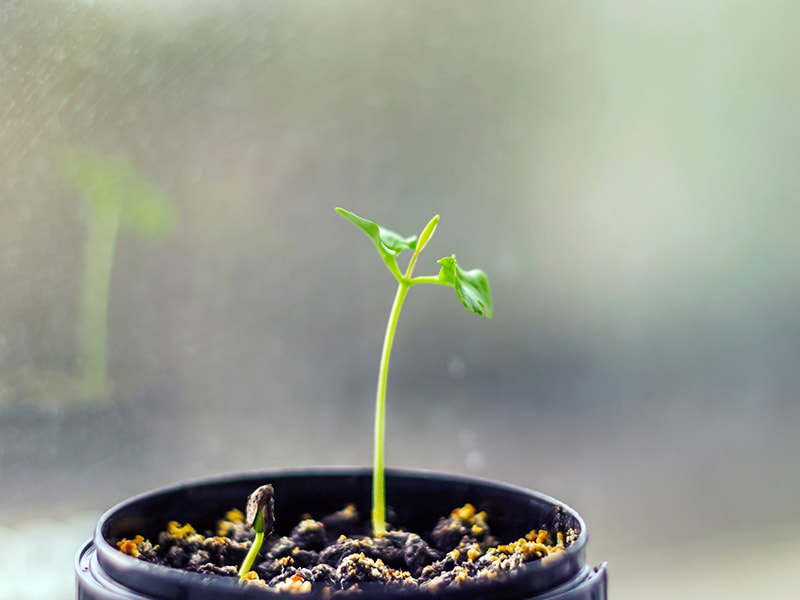
Growing pomegranates is a long-term project, but it will pay off, I promise. Not only will it save a ton of money on fruit purchases, but it will also beautify your home garden.
Step 1: Determine The Seed Type
You should figure out what kind of pomegranate seed is perfect for the climate in your area and the sizes of the growing space. If you already have the idea, you utilize the seeds for planting.
Now, wrap a paper towel around the arils and gently press to get rid of all the juice. It is imperative to remove all the flesh and pulp attached. After pre-cleaning, leave the seeds outside for a few days to dry up.
Step 2: Germinate The Seeds
Place the seed one-fourth deep in the potting soil. Water when done and put the pot near a dry and well-lit place. During this time, you should keep an eye on the soil moisture. Water regularly and keep the soil moist.
Step 3: Take Care Of The Seedling
After a month, the seeds will grow and be about 1 inch tall. And three months later, the plant can be up to 3 inches tall. If you want to move the plant outside, you should wait for the right weather. In case the temperature drops too low, it is not suitable for pomegranate development.
During this time, keep taking care of the seedling and water regularly.
Step 4: Shift The Plant to A Bigger Pot
After three months of sowing, the plant will reach a height of 3 inches. This is the right time to transfer the plant to a large pot. You can place it in the garden or on your patio as well.
Remember to cover the soil with coconut fiber to avoid beetle eggs if you put the pot outside.
What’s next? Yes, just relax. With that said, the plant is hardy and easy to grow. You only need to water once a week in the summer and every few weeks in the spring or fall.
Growing pomegranates is never easier than this. Follow this instruction and try it at your home!
Saving More Money With Proper Storage
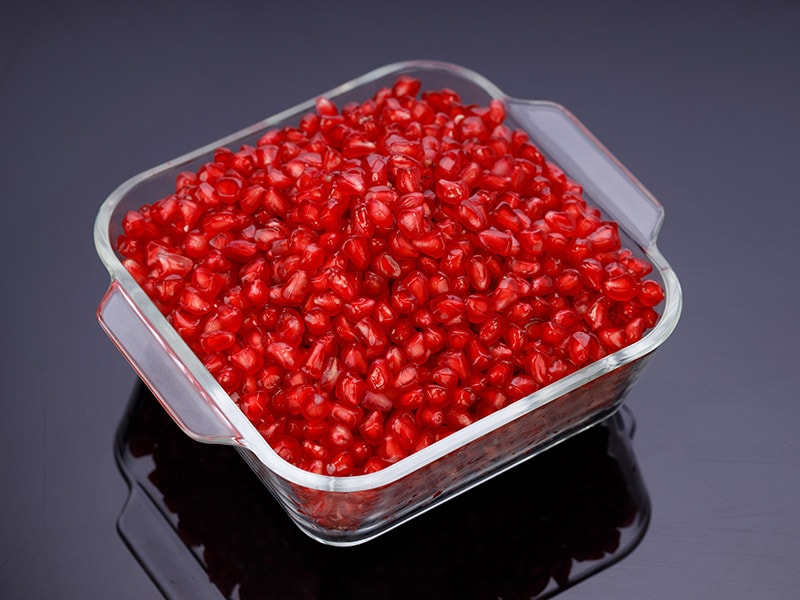
As the abovementioned, pomegranates are costly. Accordingly, buying the fruits in bulk will be more economical in the long run because they can keep fresh for a long time. Pocket these extra tips for storage to prolong pomegranate shelf life and save you more money.
Pomegranate Fruits
There is nothing wrong with letting pomegranates sit unrefrigerated for a few days. You can spread pomegranates on the pantry or hang them with strings, either way is fine. They can last about one month at room temperature.
However, be sure to keep them in a cool and dark area, away from direct sunlight. Many believe that placing a whole fruit in a vacuum bag and freezing it can prolong the shelf life. But in my opinion, you should not do that.
Leave the pomegranate unwrapped even when you spread them on the counter or keep them in the fridge. The thick rind is the safest cover for the juicy arils inside. If freezing is your preference, take the seeds out and freeze them separately.
And you can expect the shelf life of pomegranate to reach two months at the refrigerator temperature.
Pomegranate Seeds
Once you open the fruit, the seeds will go bad quickly, so refrigerating them should be on the table. An airtight container will be your ally in this journey. The pomegranate seeds can last about a week in the refrigerator and about a year in the frozen state.
Pomegranate Juice
An opened juice bottle can last 7 to 10 days in the fridge. And just like the seeds, freezing the juice will achieve the best result. Your pink liquid can last for one year in a frozen state.
Pick up more tips to preserve the red pomegranate seeds here!
See Both Sides – Pomegranate Benefits and Side Effects
The blood-red fruit is well-known for its health benefits. But have you known about its effects? Below is the breakdown of benefits and problems associated with pomegranate consumption.
Why Are Pomegranates Good For You?
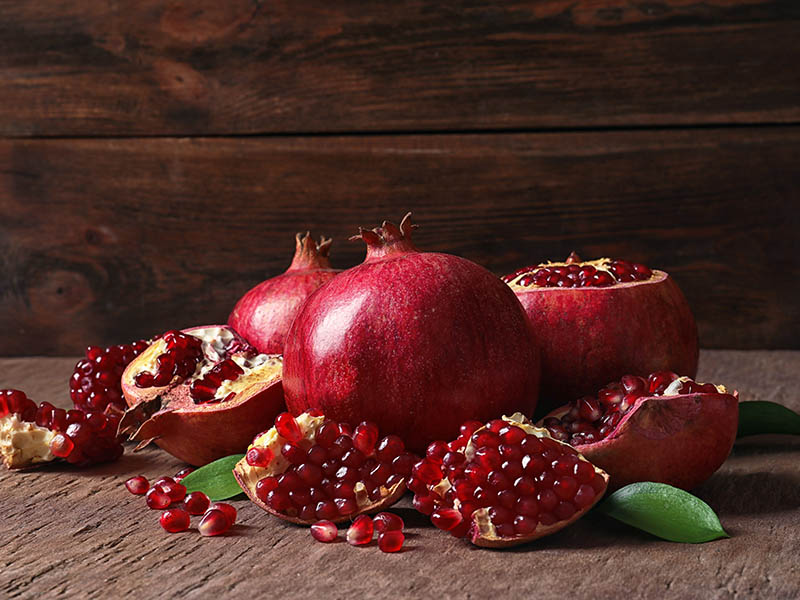
There is no need to argue much about the health benefits of pomegranates. This superfood is always on the top of the healthiest fruits available on Earth.
Pomegranates have potent anti-inflammatory and antioxidant properties, thanks to polyphenols (3). Similarly, polyphenols can also inhibit the growth of prostate cancer cells. (4)
I can say the anticancer activity of the bloody-red gems works wonders. Further studies show that consuming the fruit extract selectively can prevent other cancers, such as lung and breast. (5)
Additionally, the pomegranate is good for digestion and improving memories. In older research, the sweet jewels are proven to protect LDL cholesterol particles from oxidation, one of the early hallmarks of cardiovascular disease. (6)
Also, pomegranate juice is a natural gift for heart patients. A research analysis concluded that pinky juice lowers blood pressure. (7)
One pomegranate a day keeps the worries away. Unveil more health benefits of this mysterious fruit now!
Some Side Effects That You Need to Consider
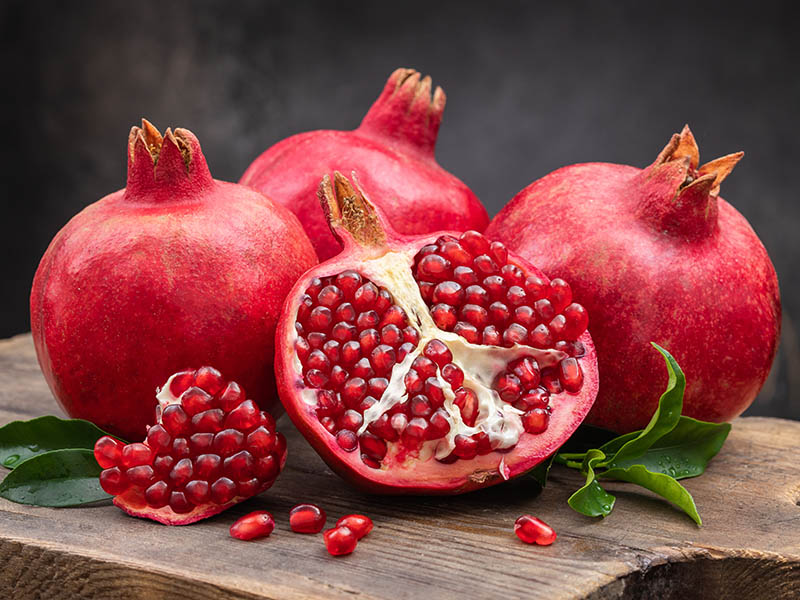
After all, you must agree that this specimen is not a “silver bullet” for everyone. There are some reminders and cautions in regards to consuming pomegranate extracts.
It is safe for most people to take on pomegranate extracts through ingestion or application to the skin. But unfortunately, there are still cases of allergy to the sweet gems.
If you experience symptoms, such as itching, swelling, runny nose, or shortness of breath, you should stop eating the fruit immediately and seek medical help as soon as possible.
Besides, the red arils are safe to ingest, but that isn’t the same case for the roots, stems, and skin (8). There is not sufficient information related to the consumption of other forms of pomegranate.
Lastly, people suffering from low blood pressure should think twice before consuming pomegranates, which can considerably lower blood pressure levels.
Tie Your Apron And Prepare These Delicious Pomegranate Recipes
Pomegranate seeds not only bring eye-catching color but also add a crunchy texture to your dishes. If you are a pomegranate lover, don’t be shy to indulge your passion for these ruby gems. Get your apron and be ready now!
Spinach Pomegranate Salad
You always enjoy food with your eyes first, so here is a pretty salad bowl for you. The crazy combination of colors will be a blessing for your eyes and add a character to the table. Mints are also present in this recipe, bringing a refreshing taste with every bite.
The ingredients are easy-to-prep, so when the time comes, you just need to mix them. As for the salad dressing, you can make it a week in advance and keep it in the fridge. Remember to shake the jar before serving.
What a treat for your eyes and mouth! Try this spinach pomegranate salad recipe right away!
Pomegranate Ricotta Cheesecake Tart
Anyone who likes cheesecake, please raise your hand! I am one of the hardcore fans of this delicious dessert. Oftentimes, the cheesecake is iridescent yellow, but when combined with pomegranate, it will have an equally outstanding crimson.
The cake consists of three layers, including the crush, the filling, and the gelée. The pomegranate gelée, a thin layer of red jello on top of the cheesecake, is the highlight of this dish. To speed up the process, you can use bottled juice to make the jello.
Gluten-Free Pomegranate Jam
As I said above, when pomegranates are in the season, you should buy them in bulk to get a better price tag. As well as making juice or salad dressing, you can turn pomegranates into a jam with large quantities of fruits.
Interestingly, this recipe is an experiment with chili powder and chili flakes. And the result? It turns out amazingly. What’s more, you will add raspberries to the juice to balance the sweet and tart taste without the need for sugar. That is even better!
FAQs
I always believe the more, the merrier, and knowledge is unlimited. Hey, check out this extra information to see if there is anything that you missed.
Are Pomegranates Worth It?
In my opinion, although the price of pomegranate is costly, it is a good investment in health. The rareness, health benefits, and delicious flavors are worth every penny.
Hopefully, with the increasing demand, the pomegranate production will be focused more and scaled up, leading to lower prices than currently.
Do you agree with me on this point? Please leave your thoughts in the comment sections below. And share this article with your friends to know what they think about the pomegranate prices. Alright! See you next time! Ciao!
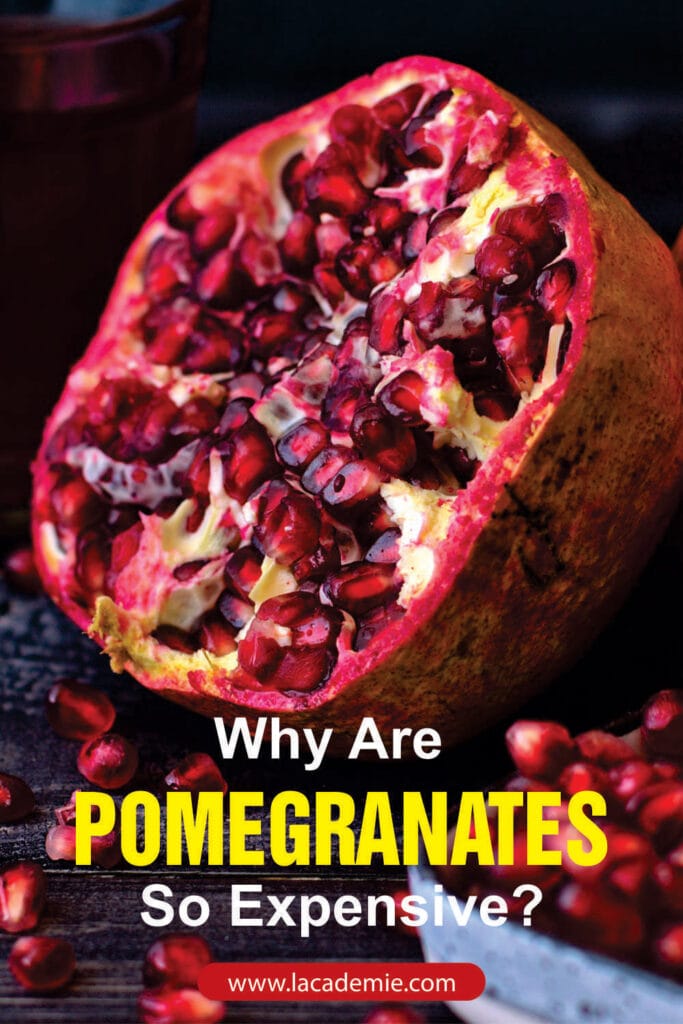
References
- Home & Garden Information Center | Clemson University, South Carolina. 2022. Pomegranate.
- Fsi.colostate.edu. 2022. Pomegranates | Food Source Information.
- Asgary, S., Javanmard, S. and Zarfeshany, A., 2014.
- Costea, T., Nagy, P., Ganea, C., Szöllősi, J. and Mocanu, M., 2019.
- Adhami, V., Khan, N. and Mukhtar, H., 2009.
- Fuhrman, B., Volkova, N., Dornfeld, L., Rosenblat, M., Kaplan, M., Hayek, T., Presser, D. and Aviram, M., 2000.
- Sahebkar, A., Ferri, C., Giorgini, P., Bo, S., Nachtigal, P. and Grassi, D., 2017.
- Martini, N., 2020. Potion or Poison? Pomegranate.

